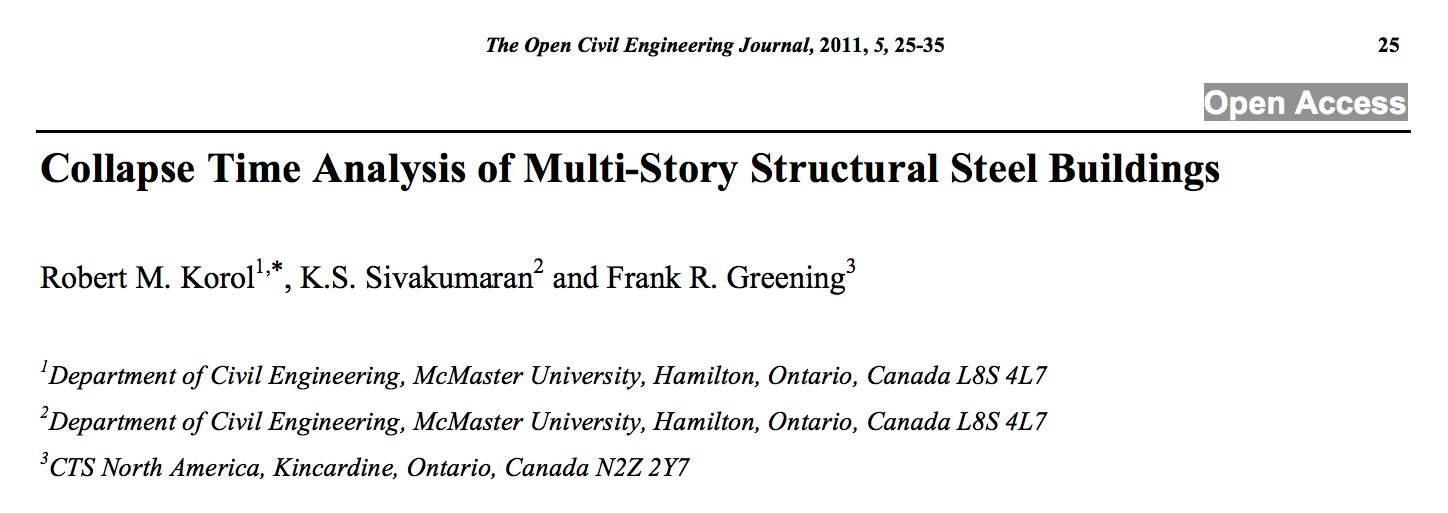Abstract: Until recently, the progression and time of collapse of structures has not been a primary objective of the structural engineering profession. However, such events are likely to be of major interest in high rise building situations where a fire-initiated failure takes place, or where a controlled demolition is to be implemented. The paper attempts to shed light on this problem and to develop velocity profiles during a collapse event, also potentially important, especially in built-up areas. Because of the complex nature of both the structural system and the process of collapse, analysis methods need to be simplistic, which are yet realistic and are easily understood by designers and code writers of the nature and cause of a building collapse. The objective of this paper is to shed light on this problem by employing the most basic equations of Newton’s laws of motion. A formulation of the problem of a building frame of N stories, subjected only to gravity loading is postulated that involves an analysis employing a generic one-dimensional discrete model of progressive collapse. The supporting elements within its nth story are suddenly degraded by whatever cause, with the velocity and time steps calculated. Several design scenarios are presented for the columns with prescribed energy dissipation properties ascertained at any level, thus allowing the motion to be determined in accordance with the known equations of energy and momentum. An example 10-story structure is proposed to illustrate the method, in which the column designs, utilizing square hollow sections and W-shapes, are governed by a combination of dead, live and wind loads. For the 6 designs postulated involving tubular columns alone, and with sequential removal of columns in each of the 10 stories, it was found that progressive collapse was arrested in 90% for such hypothetical scenarios. For the other 10%, global collapse times exceeded that of free-fall by 57 to 228%.
Read at The Open Civil Engineering Journal.













